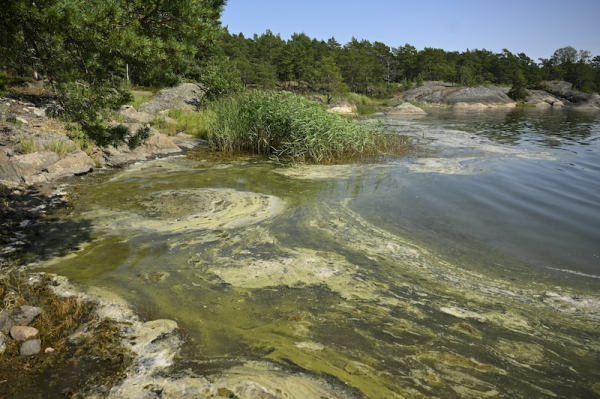
Warm weather has increased cyanobacteria sightings across Finland. Photo: Roni Rekomaa / Lehtikuva
- Previous Article Finland ranks first in UN sustainable development progress, says Orpo
- Next Article Finland’s heatwave to last into next week before temperatures drop
Helsinki’s public beaches remain largely free of cyanobacteria, but officials say the situation may shift quickly due to changing weather conditions.
Jukka Kiesi, an environmental inspector for the City of Helsinki, said on Monday that no significant cyanobacterial presence has been recorded at the city’s monitored beaches. He urged swimmers to take advantage of the clear water while conditions last.
“The situation can change quickly depending on wind, rain, and currents,” Kiesi said.
According to the Finnish Environment Institute (Syke), satellite monitoring has shown a growing presence of cyanobacteria in the Gulf of Finland. Sakari Väkevä, a Syke researcher, said on Monday that several islands in the region were already surrounded by visible blooms over the weekend.
The highest concentrations have been found near western Hanko and within the Archipelago Sea National Park. Väkevä reported that cyanobacteria have also appeared around Santahamina and along the Vuosaari channel, as well as in the outer archipelago of Kirkkonummi, Espoo, Helsinki and Sipoo. Some instances have also occurred in inner archipelago areas.
“Boaters may encounter cyanobacteria as close as 500 metres off Helsinki’s coastline,” Väkevä said.
Last week, Helsingin Sanomat reported on a large floating mass of cyanobacteria drifting across the Gulf of Finland. According to Väkevä, part of the recent satellite observations may be connected to that mass, which has slowly moved toward the Archipelago Sea.
As of Monday morning, most bathing areas in the capital region had not recorded significant cyanobacterial blooms. Only Kivenlahti Beach in Espoo had a high presence. Minor blooms were observed at Veijarivuori, Laaksolahti, Klobben, Hanikka and Ruispelto beaches.
Lifeguards report conditions each morning, and updates are made during the day if visible changes occur.
Kiesi described the low levels of cyanobacteria in mid-July as unusual. Typically, peak bloom activity is expected during warmer, sunnier stretches of summer. Current conditions in coastal waters, including temperature and calm weather, remain suitable for bloom formation.
“Now is the time to go to the beach and swim,” Kiesi said.
Forecasting the movement of floating cyanobacterial masses remains difficult due to the influence of local currents, rainfall and wind. Väkevä noted that some blooms can also form independently in coastal waters, triggered by sunny weather and warm sea temperatures.
“Neighbouring beaches can have completely different situations. Some locations are simply more prone to formation than others,” he said.
Cyanobacteria, also known as blue-green algae, often appear as greenish surface mats and can affect water quality, sometimes releasing toxins harmful to humans and animals. Authorities recommend avoiding swimming in visibly affected areas and ensuring that pets do not drink or swim in the water when blooms are present.
The Finnish Environment Institute continues to update its monitoring data through satellite imagery and field reports. The agency publishes weekly updates on the cyanobacteria situation nationwide during the summer season.
HT
- Previous Article Finland ranks first in UN sustainable development progress, says Orpo
- Next Article Finland’s heatwave to last into next week before temperatures drop
Source: www.helsinkitimes.fi
